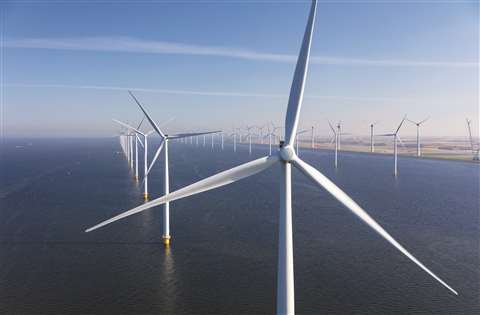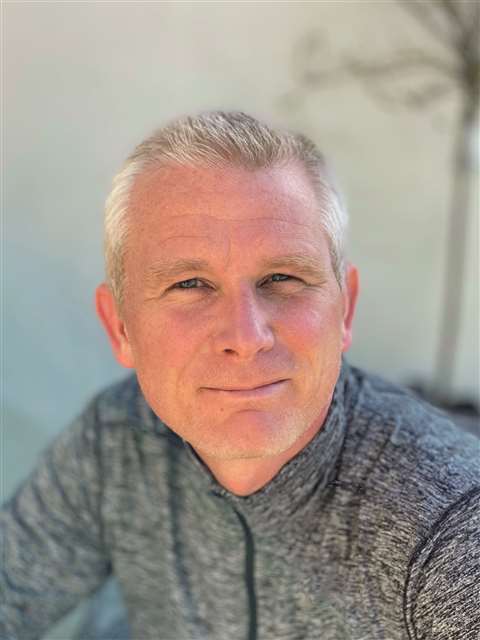Opportunities in the wind
22 March 2022
Mark Matthew on why delays in offshore wind projects must not be allowed to hinder green progress.
The offshore wind sector is growing at an unprecedented rate.
 Europe currently leads the world in its development of offshore wind farms (Photo: Adobe Stock)
Europe currently leads the world in its development of offshore wind farms (Photo: Adobe Stock)
In the UK, for example, the government’s Ten Point Plan has set a target of quadrupling offshore wind capacity to produce 40 GW of energy by 2030 – enough to power every home in the country.
However, as turbines get bigger and installations move to deeper waters, the level of technical complexity involved in such installations is increasing.
Built off the north Kent coast in 2009-2012, the London Array is recognised as one of the world’s leading offshore wind farms. Comprising 175 wind turbines, the design and construction of the array has attracted global attention and learnings from the project are being applied on a series of larger offshore wind projects around the UK’s coastline.
The largest operational offshore wind farm in the world is currently Hornsea One, with a capacity of 1.2 GW, which lies about 75 miles off the Yorkshire coast in the North Sea. With a capacity of 1.3 GW, Hornsea Two, which is currently under construction, will overtake Hornsea One as the world’s biggest offshore wind farm when it becomes operational this year.
In fact, the UK and Europe combined have more wind farms than any other region of the world and have been producing in excess of 30,000 MW of wind energy since 2020. The UK alone generates more wind energy than any other country in the world, with China in second position. The Netherlands is the second-largest market for new capacity (following China), having installed almost 1.5 GW of offshore wind capacity in 2020.
Risk is unavoidable
Increased technical complexity brings greater project uncertainty and therefore risk, but it can also bring significant opportunities. In the UK’s fast-developing wind farm industry, for example, turbine manufacturers and firms involved in their offshore installation are innovating high-performance products and solutions, which they hope to market globally in the future. Getting innovative products to market quickly carries more risk of course, but the potential commercial rewards could be significant.
As well as being exposed to all the usual risks associated with large construction projects, offshore wind farm installations bring some specific challenges for project managers. For example, unpredictable weather events and rough sea conditions can disrupt the programme of works, leading to costly delays.
This can become a particular issue if ‘weather windows’ for transiting materials or labour to the site of the installation are missed. With demand for wind power increasing as governments around the world focus on reducing carbon emissions, liftboats or jack-up vessels could soon be in short supply, adding to the risk of losing a slot. The ability to manage and forecast potential delays is critical to provide confidence for such activities.
Covering the bases
Many other risk factors could impact the installation of offshore wind farms. For example, unexpected seabed conditions, which could include hazards not picked up by geological surveys, can sometimes cause lengthy delays if objects have to be removed. Indeed, seabed conditions may be variable across the site and it is important to know this at an early stage as it could influence the design of foundations and structures.
Design and/or quality defects can also cause delays if, for example, new turbine technologies are flawed or fail to perform according to their specification. The multi-package approach, which is often adopted
when procuring large-scale infrastructure projects where multiple teams of specialist contractors are required, can also increase the risk of
cost and schedule overruns.
In any industry where the scope of projects is getting bigger and more complex, and contractors lack experience, risk management is bound to be more challenging. For this reason, it is vital that project managers ensure that robust processes, systems and controls are employed from start to finish.
Enable decision making
Project managers should also look beyond the risk register and ensure they have good visibility of the project as a whole, so they can take the right decisions in critical situations. Too much reliance on a ‘bottom-up’ approach to project delivery could allow critical gaps to go unnoticed, allowing issues to build up and come to the fore at a later stage in the programme.
Good governance and agile decision making can help to limit cost and time overruns by enabling project managers to take action as and when issues arise. As governments around the world commit to reducing greenhouse gas emissions in the wake of COP26, global demand for offshore wind farms is forecast to grow.
For the UK and European countries that have invested in wind power, there is an opportunity to capitalise on this developing economic opportunity, and skilled contractors as well as project managers have a critical role to play in accelerating the way to the wind-powered future.

Mark Matthew is a principal risk manager at Equib, a specialist consultancy providing uncertainty analysis, management and decision support for the construction industry.
Visit: www.equb.co.uk
STAY CONNECTED



Receive the information you need when you need it through our world-leading magazines, newsletters and daily briefings.
CONNECT WITH THE TEAM









